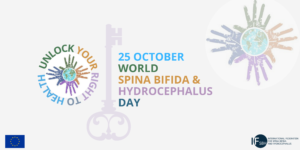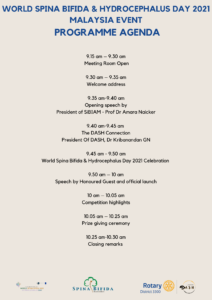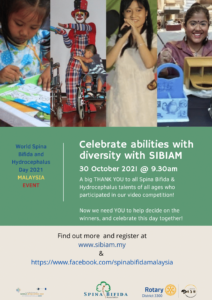
Whenever congenital conditions are mentioned, we often think of couples in an obstetrician’s office or children in hospitals. However, medical advancements have made it possible for many individuals with disabilities resulting from congenital diseases to live meaningful lives, well into adulthood. Spina bifida is one of those diseases.
Spina bifida, or “split spine” in Latin, affects an estimated 0.11-1.87 per 1000 live births in Malaysia. It occurs while the fetus is still developing and results in malformation of the spine and spinal cord. This leads to different levels of paralysis and difficulty with mobility, as well as associated conditions such as faecal and urinary incontinence, chronic renal disease and musculoskeletal deformites. When the cerebellum (back of the brain) is involved, there is accumulation of cerebrospinal fluid due to the obstructed flow, therefore causing hydrocephalus. This may also affect the child’s cognitive and learning abilities.
Although it is possible to prognosticate the mobility of an individual with spina bifida based on the level of the spinal cord that is affected, it is difficult to predict the medical complications that may occur. Therefore, it is hard to determine how “disabled” a person with spina bifida may be because functional limitations are multifactorial in nature.
This uncertainty, ironically, births hope as it means anything is possible. Aveena Devi – an artist, author and disability advocate with spina bifida and hydrocephalus – expressed this eloquently in a 2017 interview with SAYS. Following an eventful childhood filled with challenges with both her medical issues and disruptions in schooling, she found herself having to undergo her eighth surgery at age 17 to remove a growth in the brain, which caused loss in sensation and power of her right arm. Fortunately, she recovered from the surgery and regained function of her limb.
“That’s when I realised I shouldn’t take life for granted. I went through the surgery, woke up and told myself that I’ll do something with my life. When I look at myself in the mirror, I see my wheelchair as part of my support system; it is not my enemy. It is the reason I can see and do all the things I do. My wheelchair is my best friend.”
Aveena inadvertently also highlighted the role of accessibility to healthcare as a major contributor towards quality of life when living with a disability. Article 25 of the United Nations Convention on the Rights of Persons with Disabilities (UNCRPD) states that “persons with disabilities have the right to enjoyment of the highest attainable standard of health without discrimination on the basis of disability”. The theme for this year’s World Spina Bifida and Hydrocephalus Day 2021 (#WSBHD21) on 25th of October 2021 is “Unlock your Right to Health”, and it is a timely reminder of the need to address the various barriers to healthcare faced by individuals with disabilities resulting from spina bifida and hydrocephalus.
In conjunction with #WSBHD21, Spina Bifida Association Malaysia (SIBIAM) is holding a talent competition titled “Celebrate Abilities with Diversity” as part of their local event to celebrate Malaysian individuals of all ages with spina bifida. It aims to highlight and share the stories of spina bifida warriors, and their support system, in the hope to show that life with spina bifida extends well beyond hospital corridors and into the community.
SIBIAM invites you to participate by viewing the contestants’ contributions to the talent competition at its Facebook page and vote for your favourite submissions by clicking on the “Like” button below. Everyone is also welcome to join in the celebration on Zoom and Facebook Live on Saturday, 30th of November 2021, at 9:30am. Further details are available on the SIBIAM website (www.sibiam.my) and Facebook page (www.facebook.com/spinabifidamalaysia).


By Dr Chua Li-Shun
Rehabilitation physician and SIBIAM committee member
References
Sahmat A, et al. The prevalence and distribution of spina bifida in a single major referral center in Malaysia. Front Pediatr 2017;5:237
Boo NY, Cheah IGS, Thong MK. Neural tube defects in Malaysia, data from the Malaysian National Neonatal Registry. J Trop Pediatr 2013 Oct ;59(5):338-342
Ong LC, Lim YN, Sofiah A. Malaysian children with spina bifida: relationship between functional outcome and level of lesion. Singapore Med J 2002 Jan;43(1):12-17
Thong PL, et al. Health-related quality of life in paediatric spina bifida. Med J Malaysia 2019 Aug;74(4):281-287
Nandini Balakrishnan. She may have spina bifida but this Malaysian is already a chef, author and artist at 23. [Internet] SAYS. REV Media Group. Updated 2017 Mar 27; cited 2021 Oct 22. Available from: https://says.com/my/lifestyle/this-girl-survived-8-surgeries-in-17-years-and-is-now-an-artist-and-chef
https://www.worldspinabifidahydrocephalusday.com/
